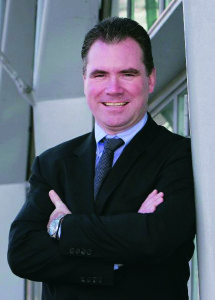Rise of the Celtic Phoenix?

Finally, some good news has come in on both economic and financial fronts. The ESRI quarterly economic commentary published in August indicated strong economic growth in 2014 and on into 2015. Even Ireland’s banks are beginning to report positive results. But is it too soon to start dubbing this new era of positivity and confidence the ‘Celtic Phoenix’? Anne Brady reports
16 September 2014
Taxpayers have carried a heavy financial burden over the last few years which, for many, has yet to dissipate. But even still, moods are improving, consumers are beginning to spend and confidence is growing. Will this burgeoning optimism be nurtured? This year was the first year of the full property tax payment and water charges are lurking around the corner. It’s a game of Jenga that could potentially topple into uncertainty with one swift pull of a block.
Is positivity catching?
For the first time in the last six years the majority of Irish people say the economy is clearly improving. That’s according to the Economic Recovery Index released by Ámarach Research in August this year. In April 2009, Ámarach Research began measuring the psychological impact of the recession. It charts the emotional progress towards recovery alongside the economic progress. The research shows that 28% of those surveyed felt more relaxed about spending than they did a few months ago. A significant increase compared to 18% of people in the same month last year. The report goes on to say that moods are catching. A continuation of the current emotional and intentional momentum should see a gradual increase in the share of consumers more prepared to spend. But only then will the recovery become more apparent on a wider scale. The KBC/ESRI Consumer Sentiment Index is also reporting positive figures with an increase from 81.1 in June to 89.4 in July. A massive jump from 68.2 reported in July of last year. Consumers are getting more positive about their views of the economy and importantly their financial situation for the coming 12 months.
Purse strings loosening
But is this reflected in retail sales? The most recent CSO statistics are encouraging with improvements highlighted in both sales value and volume. Supermarket share figures from Kantar Worldpanel in June of this year showed that grocery sales grew by 2% up to June 2014. This was the fastest rate since March 2013. SuperValu attracted 87,000 new shoppers and Aldi and Lidl continue to grow with sales and market share increasing. According to Kantar, both retailers are experiencing growth mainly as a result of their existing customers spending more. The average Aldi shopper in Ireland spent €161 over the latest period; up €15.60 compared with this time last year. Savvy shoppers are not on the way out. Amarach’s Economic Recovery Index indicated that71% are always on the lookout for opportunities to switch to cheaper suppliers. Caution is still very much a part of the Irish consumer landscape – with good reason. For all the good news there is a continued backdrop of threats – water charges, property increases and cuts to public services. Government borrowing is still at a whopping €800 million a month and this money needs to come from somewhere. Budget 2015 could be make or break.
Recommendations
 Retail Ireland recently highlighted how Budget 2015 is the ideal opportunity for the government to give some money back to consumers. It believes a more positive, consumer friendly budget, will support the current positive trends. In its budget 2015 submission, it outlined a number of recommendations including income tax cuts and a cut in excise duty. The group also called for the retention of the successful reduced 9% VAT rate on tourism-related services, and for consideration to be given to replicating this approach in other sectors. These measures, it is hoped, will boost spending and jobs in the retail sector. Retail Ireland have predicted consumer spending will rise 1.9% this year and again by 2.9% in 2015. More confident consumers might put away less money in savings. Already figures are indicating this to be the case. Savings rates have reduced to 8% from 16.1% back in 2009.
Retail Ireland recently highlighted how Budget 2015 is the ideal opportunity for the government to give some money back to consumers. It believes a more positive, consumer friendly budget, will support the current positive trends. In its budget 2015 submission, it outlined a number of recommendations including income tax cuts and a cut in excise duty. The group also called for the retention of the successful reduced 9% VAT rate on tourism-related services, and for consideration to be given to replicating this approach in other sectors. These measures, it is hoped, will boost spending and jobs in the retail sector. Retail Ireland have predicted consumer spending will rise 1.9% this year and again by 2.9% in 2015. More confident consumers might put away less money in savings. Already figures are indicating this to be the case. Savings rates have reduced to 8% from 16.1% back in 2009.
Chairman of Retail Ireland Frank Gleeson said: “Sales have grown every month this year, but the retail recovery shouldn’t be taken for granted. Tax cuts will boost disposable income and increase spending in the domestic economy. This will translate into thousands of new retail jobs.” Irish consumers are splashing out on certain items. Car sales were up 32% in August compared to August last year.
Gleeson says: “So far this year we have seen huge growth in the sale of big ticket items, such as cars and furniture. This is spending that was deferred during the recession. Food, fuel and clothing sales have also improved, but from a low base. A lot of the growth has been on the back of reduced prices due to intense competition. The average shopper now visits up to four supermarkets every month to get the best deals. The retail recovery has some way to go.”
Fierce competition in the grocery sector has kept prices low. If the recovery continues there should be a continued increase in spend. Retail Ireland strongly recommends that this growth be encouraged. “The government very wisely included retail in their recently published list of priorities. We support calls from IBEC and others to give money back to consumers through reductions in income tax in the October budget. It is the best way to nurture growth in the domestic economy.”
Balancing the books
Another factor however, that should be taken into account is Ireland’s high level of personal debt. Tax cuts may very likely be used to pay off debt and not be spent in the economy as hoped. In fact, Ámarach Research showed that 56% of people surveyed in its Economic Recovery Index said their main financial priority was to pay off debts as quickly as possible. There is also no guarantee that the money going back into the banks to pay off debts will be passed on for investment in new businesses or SMEs.
The other option for the government is to increase expenditure. While cutting taxes will decrease government revenues the second choice will increase government spending. Both are likely to increase the budget deficit. A rise in government spending might however, escalate this onset of growth to the next level. Employment rates, while decreasing are still high. Investment from the government could boost demand, create new jobs and deliver improvements in Ireland’s infrastructure. More people working would have more people spending and see a further reduction in the social welfare budget. There would be additional or improved services available,which the private sector also relies on such as roads, education and communication services. There are downsides to this also. Government expenditure cannot be increased unsustainably and there is no doubt that it has already taken a lot of strain. The high levels of unemployment impacted on PAYE and PRSI and increased the social welfare budget. Lower personal consumption affected VAT, stamp duty, capital gains tax. Nothing in life is free, and to pay for increased government spending would likely result in raising taxes or borrowing money.
Waiting game
Good economic policy can make a nation prosperous but bad economic policy can ruin it. Everything is held in the balance as we approach October. While the country isn’t quite brimming with confidence yet there is certainly a steely determination and tenacity among consumers and businesses. Consumers want to spend and retailers want to grow. Hopefully it is the starting point of something more. Is it too early to start characterising with mystical birds? Probably. But we’ll have to wait and see.
On the ground – what the retailers think
Tony Gorman, Spar, Lower Rathmines Road
I haven’t seen an uplift where I am. We have the footfall but shopping habits have changed considerably. Now people might get water and a banana on their way to work. Cutting taxes might put more money into pockets but how will that money be used? To pay bills or eat more food? People are getting thriftier.
Serena Guihen, McCann’s Centra, Moycullen
Yes, we have definitely seen an improvement. Spend is up. We have noticed it in the last three or four months particularly. People are picking up the more expensive items now. People are more confident and it’s showing in purchases. Brands are selling better. This confidence needs to be encouraged. We need to give money back to people. If we’re hit with more taxes it will dent the customer confidence we’re beginning to see.
Pat Towey, Towey’s Topaz/Costcutter, Ballaghaderreen
People are cautious. There is still a lot of uncertainty around the water charges and this is going to have an impact on spend. But we have had one of our best summers yet. The Green Way has brought a huge number of people down the west of Ireland. It has been an outstanding success for us. The government is in a better place now. It’s important to lift the tax burden on middle income families. A feel good factor will go a lot further than a feeling of negativity.



 Print
Print




Fans 0
Followers